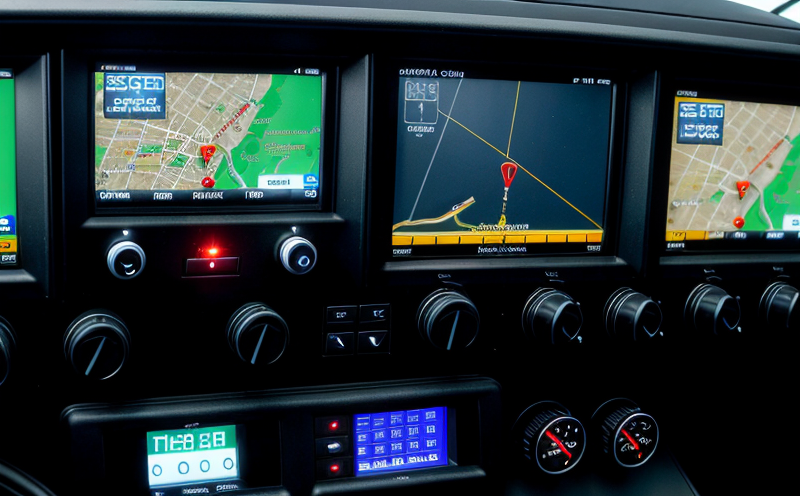EN 55015 EMC Testing of Marine Lighting Equipment
The European Norm EN 55015 specifies the limits and methods for measuring electromagnetic compatibility (EMC) in low-voltage electrical and electronic equipment. This standard is crucial for ensuring that marine lighting equipment operates correctly without causing or suffering from electromagnetic interference, which can be critical in a maritime environment where signals need to be clear and undistorted.
Marine navigation lights play a vital role in ensuring safety at sea by providing visual signals that help ships navigate around each other. These lights must meet stringent standards to ensure they do not interfere with the proper functioning of other equipment on board or nearby vessels, nor should they be affected by external electromagnetic emissions. EMC testing under EN 55015 is designed to evaluate a lighting system's susceptibility to electromagnetic interference (EMI) and its capability to radiate minimal noise into the surrounding environment.
The testing process involves exposing the equipment to various types of electromagnetic fields, including radio frequency (RF), conducted emissions, and radiated emissions. Conducted emissions tests measure any unwanted electrical signals that could travel through wires or cables. Radiated emissions tests focus on the emission of electromagnetic waves from the device itself. Susceptibility tests assess how well a piece of equipment can function in an environment with significant electromagnetic interference.
Compliance with EN 55015 is essential for manufacturers, as it ensures their products meet international standards and are safe to use on ships and other maritime vessels. Non-compliance could lead to operational failures or even accidents at sea. The test procedure involves several stages, including preliminary testing, detailed analysis of results, and certification based on these findings.
Real-world scenarios where this testing is critical include the integration of new lighting systems into existing ships, modifications that involve adding or changing electronic components, and the development of innovative navigation lights. In all these cases, it's crucial to ensure that any changes do not compromise the overall electromagnetic environment on board.
The test setup typically includes an anechoic chamber where the equipment is placed under controlled conditions to simulate real-world environments. The chamber absorbs reflections from walls and floors, ensuring accurate measurement of emissions and susceptibility. This setup allows for precise testing of both conducted and radiated emissions, as well as susceptibility tests.
Compliance with EN 55015 not only protects the integrity of marine equipment but also enhances safety at sea by reducing the risk of accidents due to malfunctions caused by electromagnetic interference. By ensuring that all navigation lights meet these rigorous standards, we contribute to a safer maritime environment for everyone.
Given the critical role of lighting in maritime navigation, it is essential that manufacturers and designers adhere strictly to these standards during product development and modification processes. This commitment ensures that every piece of equipment contributes positively to overall safety and reliability on board ships.
Applied Standards
- EN 55015: Electromagnetic Compatibility (EMC) limits and methods for low-voltage electrical and electronic equipment, including marine lighting equipment.
The application of EN 55015 ensures that all aspects of the tested equipment are evaluated comprehensively against internationally recognized standards. This includes not only the performance under normal operating conditions but also during potential fault states where electromagnetic interference could be most severe. The standard covers both conducted and radiated emissions, as well as susceptibility to external electromagnetic fields.
By adhering to EN 55015, manufacturers can ensure that their products are robust against interference from other electronic devices while also not emitting unnecessary signals that might disrupt others. This dual protection is particularly important in the marine sector where equipment operates in close proximity and under challenging environmental conditions.
The standard specifies detailed protocols for conducting tests, ensuring consistency across different laboratories globally. Compliance with these standardized procedures guarantees reliable results that can be trusted by regulatory bodies and end-users alike.
Scope and Methodology
The scope of EN 55015 EMC testing for marine lighting equipment encompasses the evaluation of various parameters critical to ensuring electromagnetic compatibility. This includes measurements related to conducted emissions, radiated emissions, and susceptibility tests.
Conducted emissions tests are performed using a high-frequency current injection (HFCI) method, which involves connecting the equipment under test (EUT) to a network of conductors that simulate real-world conditions. Radiated emissions testing is carried out in an anechoic chamber where the EUT is exposed to specific frequency bands to determine its emission levels.
Susceptibility tests assess how well the equipment can function in environments with significant electromagnetic interference. This involves subjecting the equipment to various types of disturbances and observing whether it maintains proper operation throughout these conditions.
The methodology outlined in EN 55015 provides clear guidelines for conducting each type of test, including setup procedures, measurement techniques, and acceptable limits. These stringent requirements ensure that all testing is carried out consistently and accurately across different laboratories.
Following the completion of these tests, detailed reports are generated summarizing the findings. These reports provide comprehensive information on the performance of the equipment under various conditions, highlighting any areas where improvements may be necessary to achieve full compliance with EN 55015 standards.
The use of advanced instrumentation and controlled environments allows for precise measurement and analysis, ensuring that only reliable data is captured. This approach enhances confidence in the results obtained from testing, making it easier for manufacturers to understand their equipment's performance and identify potential issues early on.
Frequently Asked Questions
- Ensures compliance with international standards, enhancing safety and reliability.
- Makes equipment more robust against interference from other electronic devices on board ships.
- Avoids unnecessary emissions that could disrupt the proper functioning of other equipment.





